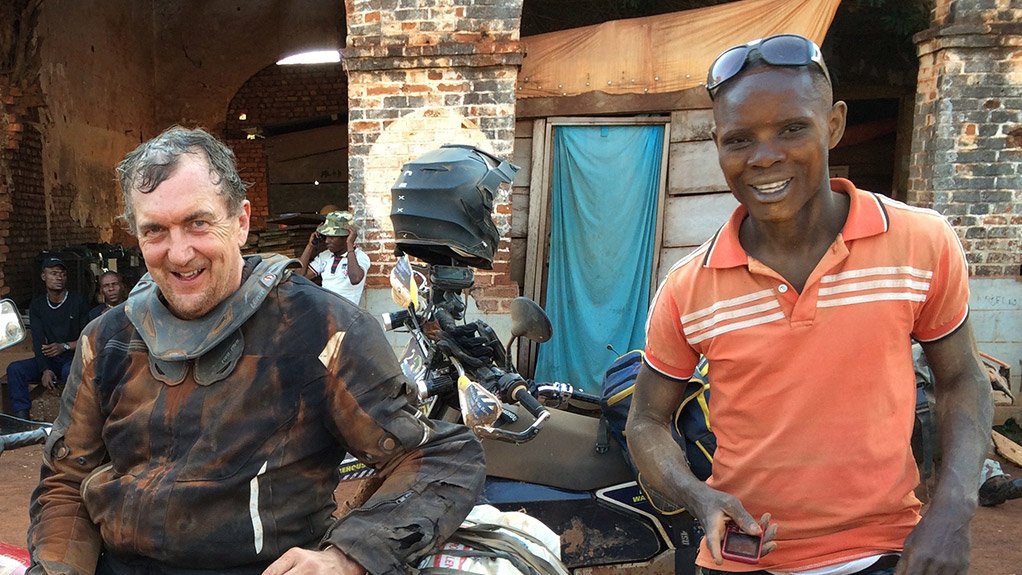JOHANNESBURG (miningweekly.com) – London-listed Randgold Resources is well placed to make good its second quarter production slippage and keep its 2016 output forecast intact.
Teams have been reworking their mine plans to ensure that the company ends the year within guidance.
While prolonged mill downtime at Tongon, in Côte d’Ivoire, and continuing transition to a mixed-ore feed at Kibali, in the Democratic Republic of Congo (DRC), negatively impacted production and costs in the three months to June 30, the mill has been back up and running for a month now and the flagship Loulo-Gounkoto complex, in Mali, is doing well enough to beat guidance substantially and replace lower guided Tongon output.
“Loulo is very well placed to outdo itself,” Randgold CEO Dr Mark Bristow told Mining Weekly Online in a telephone interview.
Kibali’s challenge is grade for the next two years, but its new Kombokolo satellite is high grade, so Kibali has a new mine plan with new sources of ore at high grade.
“We’re in good shape,” Bristow added.
The second quarter saw Tongon’s two milling circuits lose 46 days after a breakdown and Kibali’s production fall 4% to 281 494 oz.
But while overall cash costs an ounce rose 12% to $727/oz and profit fell 8% to $58.7-million, net cash rose 6% and cash holdings lifted 7% to $272.7-million.
“We’ve had a very tough first half but look at our bottom line. At the half-year, we’re still up on profits and we’re building cash despite our aggressive dividend policy,” Bristow pointed out.
Gold sales for the quarter rose 2% to $354.4-million on a 6% higher received gold price that averaged $1 264/oz, which offset the production drop.
ADVANCED BROWNFIELD ADD-ONS BECKON
More than a million ounces of higher-grade ore is beckoning at Gara, in Mali, with at least half of that being converted into reserves by year-end.
Moreover, those four years of extra Gara mine life are on the way from current infrastructure, at no extra capital cost.
Also at Gara, the feasibility study on the turning to account of a small 100 000 oz openpit is on track to be completed by year-end.
Meanwhile, the 2.6-million-ounce, 450-m-deep super pit at Gounkoto is looking good to go, with no red flags, all the geotechnical work complete and only the hydrology study still to be undertaken.
The Randgold team has also been able to fast-track the brownfield Kombokola satellite deposit, making it Kibali’s effective 2016 ‘saviour’ as a free-milling, high-grade and low-strip-ratio provider that is a mere 1 km from the plant.
The mining of the Kombokolo pit is scheduled to begin at the end of the third quarter.
The Rhino target is also being looked at as a potential high-grade source of another 50 000 oz to 100 000 oz.
At the same time, the greater exploration programme continues, with work under way at Moku, where the geological map and permit-wide stream-sediment survey should be completed by the end of September.
Much is also under way in Côte d’Ivoire, which Bristow regards highly, both for its geology and as an investment destination.
In northern Côte d’Ivoire, advanced targets that are seen to have the potential to become important assets include Fonondara and Kassere on the Boundiali permit.
Then, in Senegal, the Sofia prospect is showing signs of becoming a high-grade, free-leaching satellite resource for the feasibility study-stage Massawa project.
The Bambadji joint venture (JV) with Iamgold has been renewed and new permits are being sought in southern and western Mali, as well as in southern Côte d’Ivoire, where a new JV is being negotiated.
In the DRC, the company is busy conducting an airborne survey over the Ngayu greenstone belt, south-west of Kibali.
“We’re invested right through the spectrum of exploration, from advanced brownfield add-ons to defined drill targets in the centre of the triangle, to advanced greenfield new targets,” said Bristow, who finds exploration as much a numbers game as good science.
An idea of the low hit rate is provided by that fact that Randgold has evaluated 1 500 targets in the last 20 years and found only five world-class mines.
“If you’re disposed to depression, you shouldn’t be an explorer,” Bristow quipped.
In targeting three new mines in the next five years, Randgold will stick to its criteria of only mining deposits of three-million ounces or more that can provide a 20% return on a gold price of $1 000/oz – a tough ask.
The company is critical of supply indiscipline.
“There’s only $200 on the gold cart and everyone has forgotten the discipline and is starting to race around and pay more,” Bristow noted.
But that comes against the background of cut capital.
The consolidated guidance of the industry when you look out the next five years is on a very big downward trend.
“For the industry to really survive, it needs to find some deposits. So you can run around and rearrange the deck chairs or you can try to put some new ones on the deck and that’s our focus.
“You have to be diligent. You’ve got to be motivated and you’ve got to be able to be tenacious enough to stay the course, otherwise you just don’t get there,” he added.
Exploration expenditure increased 46% quarter-on-quarter to $13-million, with some $50-million to $60-million spent a year in search of profitable growth ounces.
Net cash generated from operations for the quarter of $101.5-million increased by 6% from the previous quarter and by 42% from the corresponding quarter in 2015, primarily reflecting decreases in operating working capital.
Edited by: Creamer Media Reporter
EMAIL THIS ARTICLE SAVE THIS ARTICLE
To subscribe email subscriptions@creamermedia.co.za or click here
To advertise email advertising@creamermedia.co.za or click here













